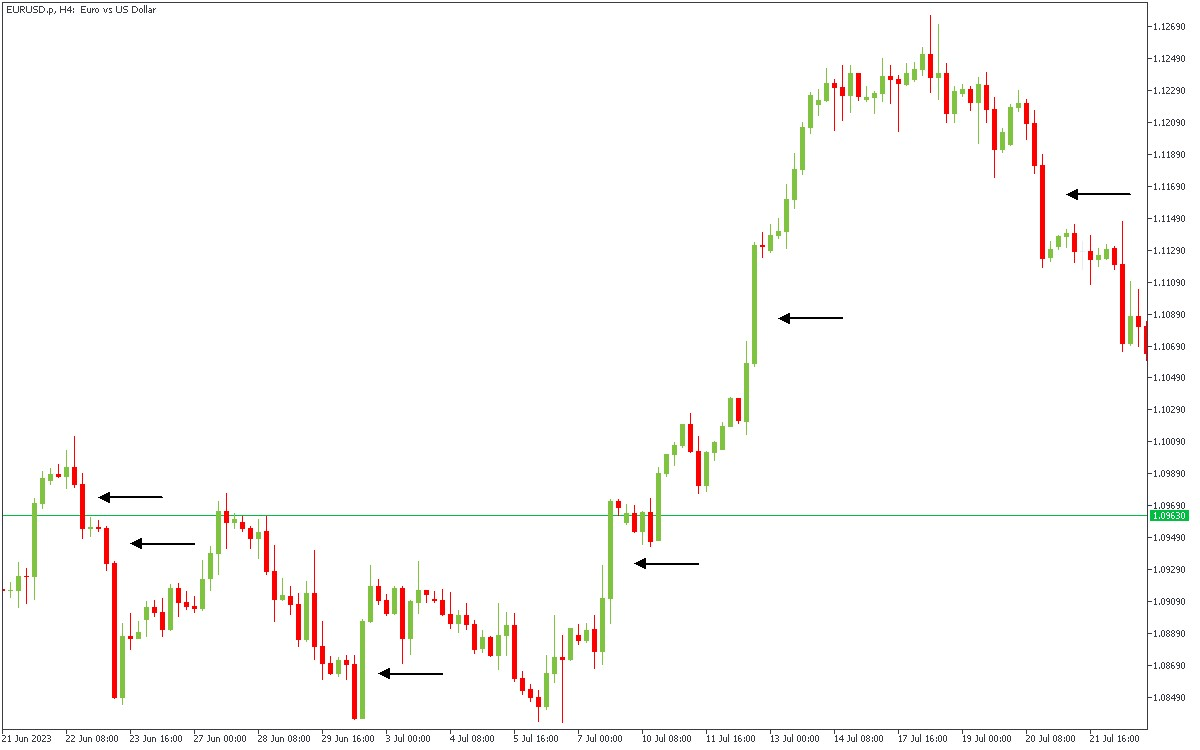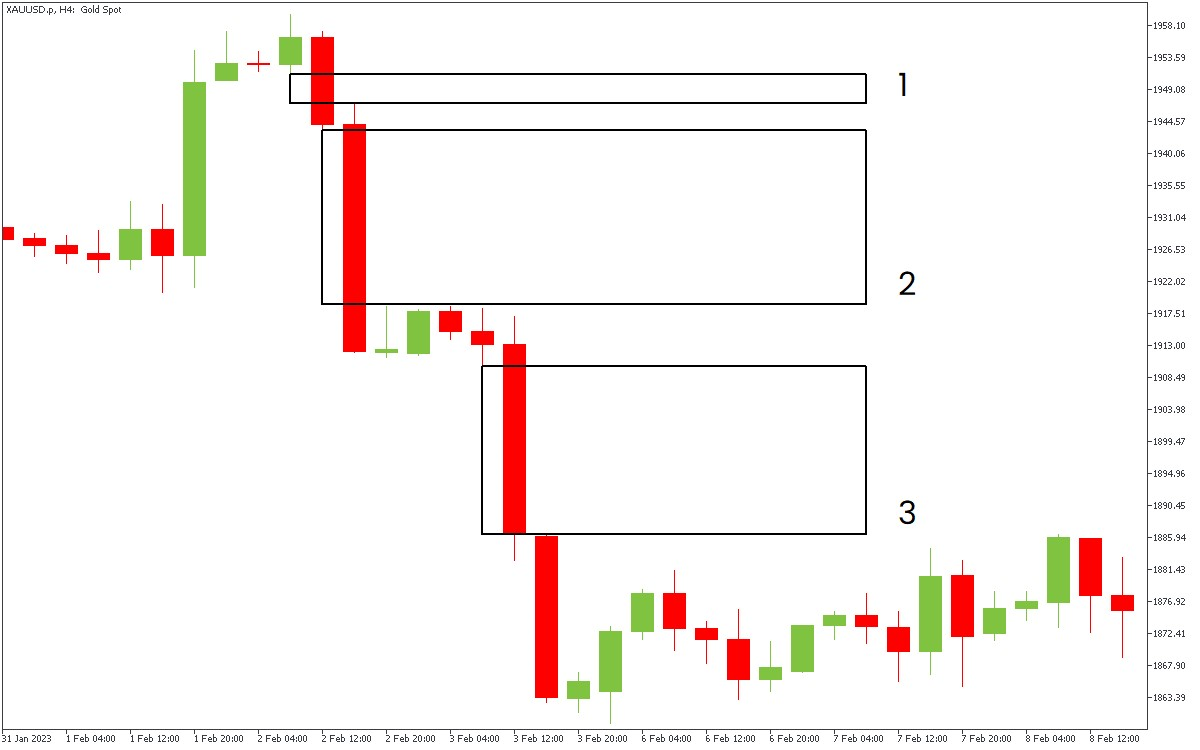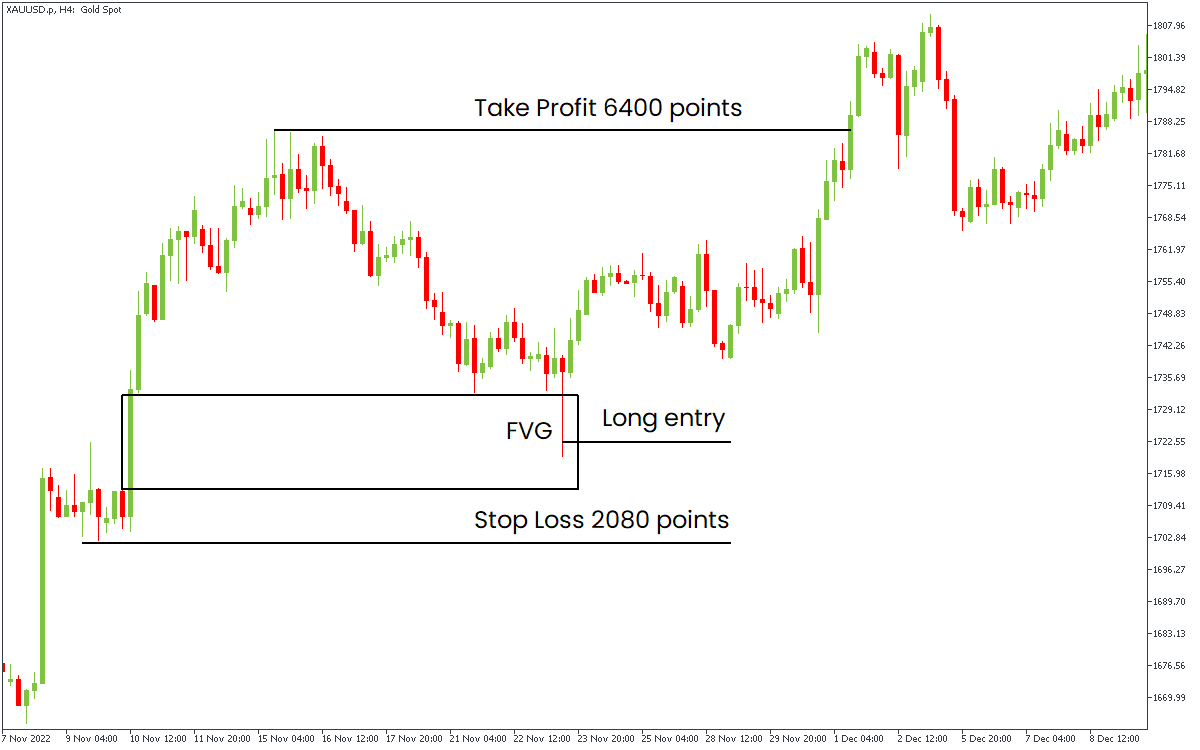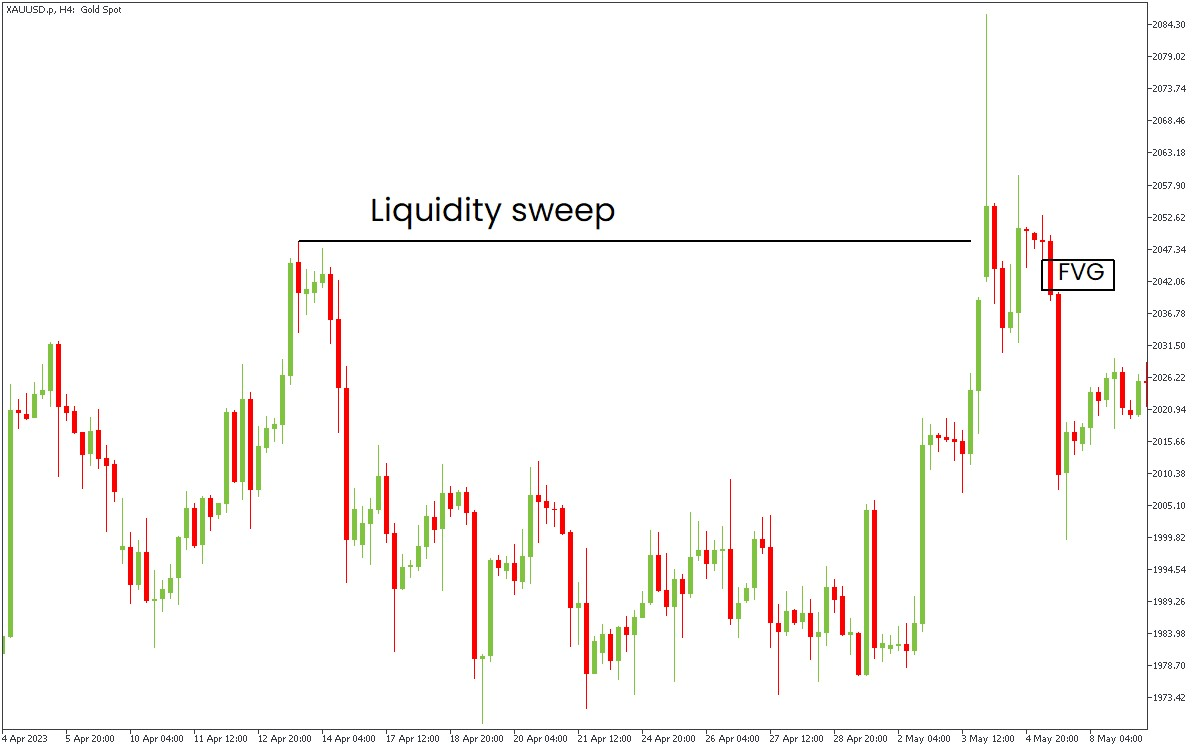
The DeMarker Indicator was invented and described by Thomas DeMark.
2023-09-07 • Updated
This article introduces you to a trading strategy that doesn’t require volumes, technical indicators, and price patterns. All you need to do is to be attentive to the price action. Welcome to the Imbalance tutorial.
How to understand when to enter the trade? We may look at an RSI indicator, Stochastic data, MAs, or something else. Each indicator has a place in the world and may work under certain conditions. But there is a way of analysis that excludes technical indicators and price patterns like double tops, heads with shoulders, and wedges. This method of analysis uses a different approach.
Traders call it the Smart Money Concept (SMC). It’s a market analysis method based on the big players' probable actions: banks, institutional investors, whales, market makers, and insiders. When a huge player wants to enter the game, it creates unusual price fluctuations because the big player moves the market because their orders are insanely large. Usually, the price starts to move quite fast, creating big long candles with relatively small wicks, like in the chart below.

In the picture above, the spaces that we marked with arrows are called an imbalance. Another name is more complicated: a fair value gap (FVG). You may find it all across different charts, from Forex and gold to crypto and stocks (although stocks have way more gaps because stock trading is time-barred).
Imbalance consists of three candles. The second candle is an impulse in any direction. The first and the third candles create the border of the imbalance. The imbalance has formed after the third candle closes.
The imbalance is located between the first candle's highest point and the third candle's lowest point (bullish imbalance).

All three black rectangles on the chart below are bearish imbalances. It’s a space between the first candle’s lowest point and the third candle’s highest point. It’s part of the middle candle that isn’t touched by the neighboring candles.

We consider the imbalance strong when the price collected liquidity above the recent highs or below the recent lows before creating an imbalance. The basic rules for entering the trade are the following:
There are two options for long entries:
Both options work the same way with minor differences. You need to know that trend reversal may be harder to catch because the market works, so the price will likely move in the direction of the trend.
This example focuses on trend correction, and the next one is about trend reversal. Wait for the price to go higher with strong momentum (fast movement), leaving an FVG behind. It’s better if the price collects a liquidity pool before moving higher.

All we need to do is to wait for the price to go deeper into the FVG and open a long trade. The Stop Loss should be below the last swing low. The Take Profit should be above the recent high. It’s important to maintain a decent RR ratio (risk-reward). If you have a 1:3 RR ratio, you’re all set. A lower reward usually means it's wiser to skip the trade.
In the example below, we open a trade in the middle of the FVG from the upper chart to get the 1:3 RR ratio.

There are two options for short entries:
Both options work the same way with minor differences. You need to know that trend reversal may be harder to catch because the market works, so the price will likely move in the direction of the trend.
To enter the trade, wait for the price to sweep the closest liquidity pool and reverse, leaving the FVG behind, as on the chart below.

After that, wait for the price to reach the FVG. You may enter the trade as soon as the price touches the imbalance or wait for it to fill the whole gap. Rely on your risk management in deciding. If your RR (risk-reward) ratio is at least 1:3, then enter the trade. In another case, skip the entry.
Your Stop Loss should be above the recent high. Your Take Profit should be near the liquidity pool (support levels for short entries). You can also put your Take Profit at the lower FVG, as it’s also a price magnet.

This strategy is about waiting for the price to make several critical steps:
Only in that case, we may enter the trade. On the other hand, the RR ratio is usually quite good, and you will have a lot of trade entries with this strategy.
Learn. Trade. Repeat.

The DeMarker Indicator was invented and described by Thomas DeMark.

This article explores the MACD + RSI trading strategy and how it can be effectively employed to identify trade opportunities in the forex market.

Bill Williams is the creator of the most popular market indicators: Awesome Oscillator, Fractals, Alligator, and Gator.
If you are 18+ years old, you can join FBS and begin your FX journey. To trade, you need a brokerage account and sufficient knowledge on how assets behave in the financial markets. Start with studying the basics with our free educational materials and creating an FBS account. You may want to test the environment with virtual money with a Demo account. Once you are ready, enter the real market and trade to succeed.
Click the 'Open account' button on our website and proceed to the Trader Area. Before you can start trading, pass a profile verification. Confirm your email and phone number, get your ID verified. This procedure guarantees the safety of your funds and identity. Once you are done with all the checks, go to the preferred trading platform, and start trading.
The procedure is very straightforward. Go to the Withdrawal page on the website or the Finances section of the FBS Trader Area and access Withdrawal. You can get the earned money via the same payment system that you used for depositing. In case you funded the account via various methods, withdraw your profit via the same methods in the ratio according to the deposited sums.
FBS maintains a record of your data to run this website. By pressing the “Accept” button, you agree to our Privacy policy.
Your request is accepted.
A manager will call you shortly.
Next callback request for this phone number
will be available in
If you have an urgent issue please contact us via
Live chat
Internal error. Please try again later
Don’t waste your time – keep track of how NFP affects the US dollar and profit!
